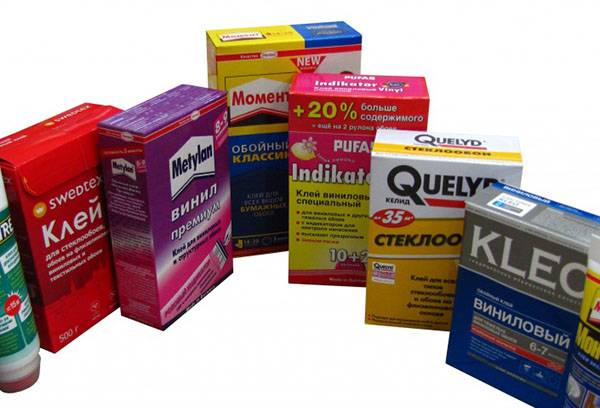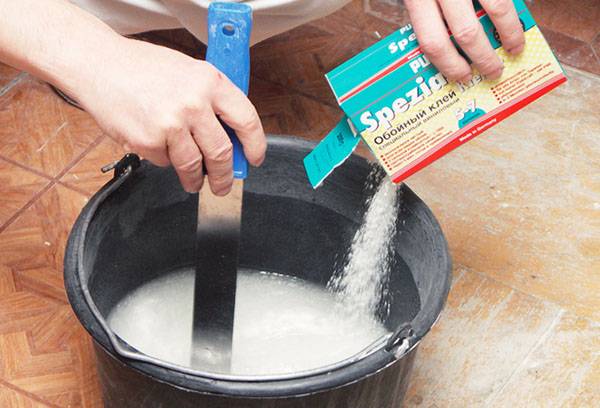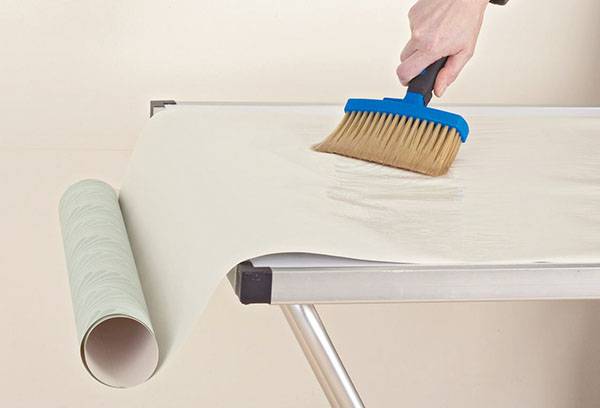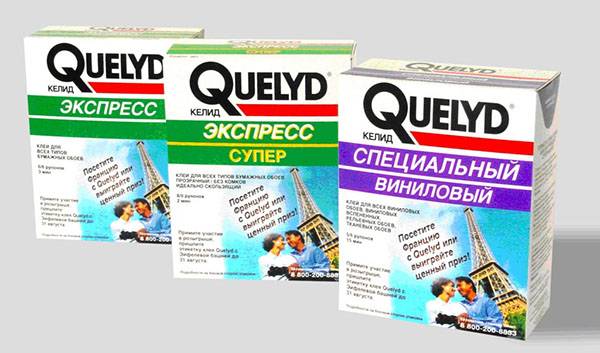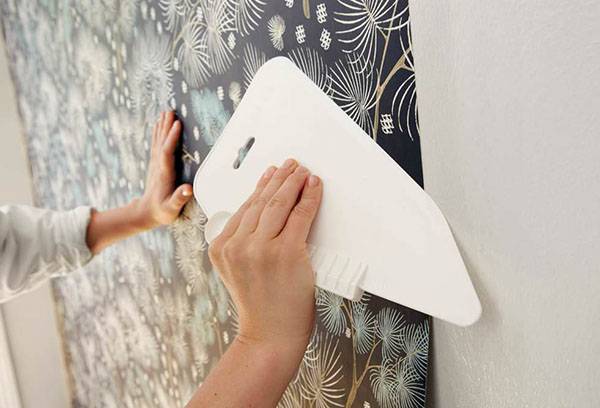The choice of glue for wallpaper and the rules for its use
Content:
Starting to buy everything necessary for the repair of the premises, people pay most attention to the choice of wallpaper. Which is understandable, because for this you need to spend a lot of time choosing the right pattern, calculating the number of rolls and other nuances. But glue for wallpaper is considered just an application. At stands with glue, people try not to spend a lot of time and take either the cheapest option or the one that the seller will helpfully advise. But if you use the wrong glue in the repair, then soon the canvas with beautiful patterns will be damaged and will have to be glued again. Therefore, it is worth preparing for the purchase in advance.
Types of glue - which is better?
Wallpaper glue can be of different types. And this diversity is explained by the same large number of types of wallpaper. Therefore, you first need to buy them, and only then suitable glue.
- Universal adhesive. Yes, there is also a look that is suitable for any wallpaper. And many consumers choose it - as the easiest option. However, the masters do not approve of this approach and believe that it is better to use special wallpaper glue.
- Glue for non-woven wallpaper consists of starch, flavored with methyl cellulose.
- Almost the same composition and means for vinyl, except that the ratio of substances depends on the density of the material.
- There is glue for vinyl wallpaper on a non-woven basis. They are quite heavy, so only special glue can reliably fix them.
- Separate glue is for paper wallpaper.
- Means for textile wall-paper has the increased resistance to humidity.
- And PVA is a part of glue for cullets - thanks to it wallpaper will be fixed reliably.
- If you want the renovated room to be as safe as possible for your health (especially when it comes to the children's room), then it is worth choosing glue cleaned of impurities. It also contains substances that protect the walls from mold.
- There are wallpaper glue and to adjust the joints. It is sold in special packaging.
How to spread glue?
On the packages it is always clearly painted how to breed a certain adhesive mixture. But usually more attention is paid to proportions. And we will study the basic principles of preparation of the composition.
- To do this, you will need a bucket or basin. Special containers of large volumes are sold all in the same building stores.
- Proper preparation of water is also of great importance. It should be at room temperature. If you take a hot liquid, it is likely that when stirred, lumps form. Although this is not such a disaster, the construction mixer will solve the problem.
- And you can stir wallpaper glue with the help of a variety of devices. This is an ordinary stick, and a construction mixer (or a drill with a special nozzle). The kitchen mixer should not be used - they are not so powerful, and the resulting composition due to this device will fly apart.
Now to the cooking technology itself.
- Pour the right amount of water into the container (the main thing is to observe accuracy, a measuring cup will come in handy).
- Open the packaging with glue in advance.
- Start stirring the water in a circular motion.
- Pour the powder slowly into the resulting funnel (do not stop stirring - if this is not done, the powder will immediately gather into lumps).
- Stir for another ten minutes. Then leave the substance to swell (about half an hour, although glue for heavy wallpapers may take an hour).
How much diluted glue is stored?
Wallpapering can stretch for several days.And if you have already spread glue for wallpaper in large quantities, then you can worry about the issue of its storage. Many manufacturers on the packaging indicate how much and under what conditions the diluted composition remains suitable for use.
If you do not have such information, then you should be guided by the general rules:
- Pour glue into a glass jar, if there is a lot of it, then several. Just do not leave in the container in which they were stirred.
- Cover with a cloth.
- Put in the refrigerator.
- In this state, the substance can be stored for up to ten days. Although some claim that it does not lose its properties in two weeks.
Glue consumption per 1m2
When buying glue for wallpaper, try to immediately calculate how much you need. After all, no one wants to run to the store in a hurry. Of course, it’s worth buying with a small margin.
Here is an approximate calculation of how much substance is needed per 1 m2:
- For light paper wallpapers, you need about twenty grams per square foot.
- If we are talking about heavier canvases (including vinyl), then you need about fifty grams.
Perhaps, such calculations of the amount of wallpaper glue will seem uncomfortable to you. Therefore, many manufacturers immediately indicate on the package how many rolls or on what area its contents are intended.
- So, a pack of glue intended for paper wallpaper, 170 grams is enough for five rolls.
- 200 grams of powder will be enough for seven rolls of light vinyl wallpaper or five heavy.
- You’ll spend 280 grams on six rolls of non-woven canvas.
- A pound of powder is needed for six rolls of glass.
- 450 grams is needed for ten rolls of any less heavy canvases.
Well-known manufacturers
What kind of wallpaper glue is most often found in hardware stores?
- "Cleo." This is a French manufacturer whose products are firmly entrenched in our market. The composition of the substance includes elements that can protect the walls from the formation of mold. There are many varieties of this wallpaper glue. For example, "Cleo Ultra" - it is suitable for glass. It is also absolutely safe for people - if you are going to make repairs in the nursery, then take a look at it. Cleo Extra is ideal for fabric webs. There is a special “Cleo” for processing wallpaper at the joints - it is suitable for any type.
- Kelid. Also a French company, but the products cost slightly less. This company produces wallpaper glue for all materials. Feature is slow drying. This will seem to some as a minus, but to someone as a plus. After all, even within ten minutes after applying the substance, you can correct the bumps.
- "Methylan" - glue for wallpaper from the same price category as Cleo. It is only produced in Germany. There are separate products for specific types, as well as universal wallpaper glue.
Usage Tips
And finally, a few tips that will help with wallpapering the walls. Indeed, it is often not possible to do this well. But the reason is not at all bad wallpaper glue. We need to pay attention to a few more important points.
- First, prepare the walls. And it's not just about removing old canvases. All bumps on the walls need to be fixed with putty. If the surface intensely absorbs moisture, pre-treat it with glue, otherwise later bubbles will appear on the wallpaper.
- Secondly, it is important to know that when using paper wallpaper, the solution is applied to the canvases themselves. But if you chose non-woven or glass, then distribute the glue on the walls. In this case, it is worth preparing more solution than provided by the manufacturer. The reason is described above - part of the glue is absorbed into the wall, so if the layer is not thick enough, the wallpaper will not hold well.
- If air bubbles appear under the canvases, you can get rid of them with a brush or roller. Drive them along the strip, gradually pushing the bubbles to the edge.
- Are you satisfied with the result of the work? Remember to clean the wall with a slightly damp sponge.Thus, get rid of traces of glue that, when dried, will spoil the appearance.
Output
Now you know that choosing wallpaper glue is not so difficult. The main thing is to follow a few rules:
- choose the type of glue, based on the type of wallpaper chosen;
- Resist the temptation to purchase a universal remedy - it is less reliable;
- accurately calculate how much you will need (many manufacturers take care of consumers themselves and indicate for which area the packaging is intended).
